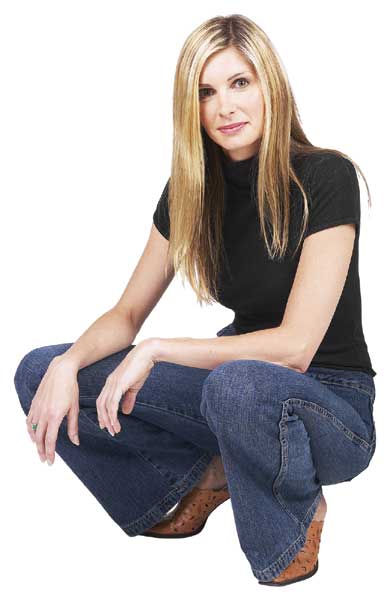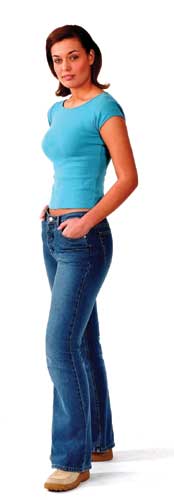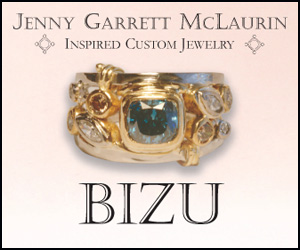Jeans 101
Fit tips for every body.
By T. Shawn Taylor

Jamie Latal can picture her 5-foot-4-inch, slightly pear-shaped, size-8 frame in funky, dark-wash, boot-cut denims.
So why, she wonders, can’t she find them?
“All the jeans are made for women who have no thighs or hips and are straight from the rib cage down,” says Latal, 39. “I’m not overly disproportionate. It shouldn’t be that hard.”
For any Triangle woman, the hunt for the perfect pair of jeans can be frustrating. The first problem is that not every style is available in just the right shape and size.
It’s important, say the experts, to know your body and to accept that what looks good on someone else might not look good on you.
Unfortunately, emotional buys of the latest fad or the hippest designer often help perpetuate feelings of inadequacy among women who don’t fit the mold, says Thomas George, owner of a jeans shop.
There’s no one rule to follow when trying to fit a particular body shape, George says.
The fabric and wash of the pants, as well as the rise in the front and back and the length of the inseam, all play a part.
Manufacturers have always designed jeans on fit models, George explains. But today, unlike 15 years ago “when we all wore the same jean,” the specifications are as precise as the measurements of a room.
Some large department stores will limit the variety of lengths and cuts they carry to avoid inventory overload, says Paige Adams-Geller, a former fit model who started her own line, Paige Premium Denim, to cater to women of varying shapes and sizes.
“Stores have learned that it works best to stick to the middle ground,” says Adams-Geller, adding that smaller retailers and specialty stores may offer a better selection because they may be more familiar with their customers’ desires.
For the buyers, rapidly shifting trends can cause confusion, too.
For instance, George says, a low-rise once was considered 8 inches from the crotch to the waist.
“Now, that’s a high-rise jean.”
The height of the rise changes depending on how it’s measured — from the crotch seam to the zipper or from the crotch seam to the top of the waistband, he adds.
Obviously, not every brand or style is going to suit every woman. That’s why women on a denim hunt should understand what they’re looking for and how to articulate their tastes.
“Nobody knows your sensitivity,” George says. “Whether it’s your thighs you’re worried about or your butt, it’s what your body senses and what your body allows you to do.”
Certain fabrics, washes and rises pair with different body shapes.
The experts offer these guidelines:

Big thighs, athletic build
Choose jeans made from 100 percent cotton with a relaxed fit because cotton doesn’t hug and accentuate legs.
A wider-leg trouser also gives the illusion of being longer and skinnier on top.
Substantial bottom
Go for fabrics with Lycra that stretch and a lower rise in the rear to try to avoid the gap in the back.
Tall and skinny or tall and big-boned
Look for versions with an inseam of 35 inches or more. For fuller figures, stretchy fabrics are recommended.
Long butt or narrow hips
All booties are not created equal. Height, torso length and roundness of the buttocks can affect jeans’ fit.
Choose classic-fitting pants, even a men’s version, that won’t accentuate the length of the buttocks.
Consider a lower rise because a high rise might make the derriere appear even longer.
Saddlebags
This is the toughest fit of all. Avoid fabrics that hug the sides of the legs. A trouser cut may be the best solution.
Protruding or flabby stomach
Two solutions: High-rise models that suck you in or low-rise worn with a long top for full coverage.
Short, pear-shaped
Plenty of fabrics and cuts adjust to this body shape but length can be a problem. Wearing high heels is not always the solution, so seek brands that offer cuts for shorter women.


